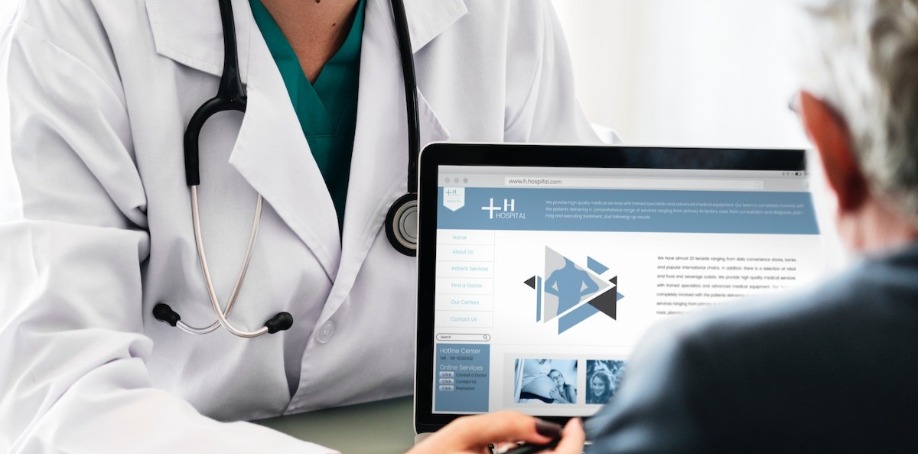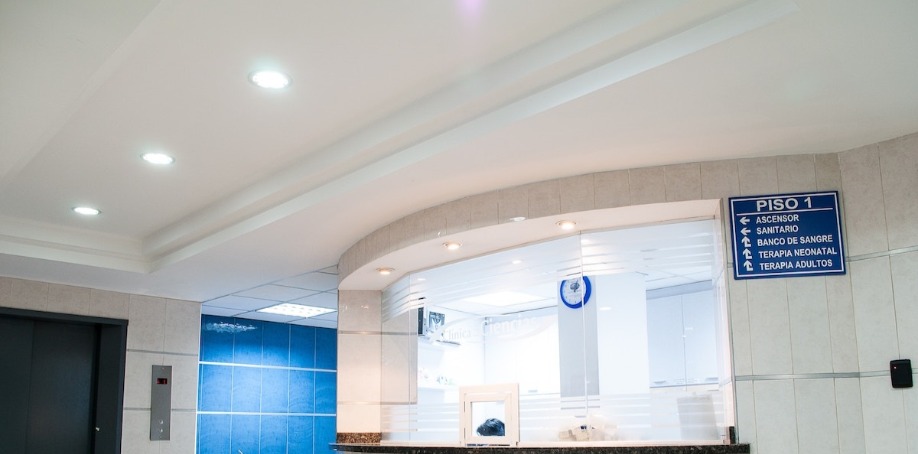
AV over IP has become an increasingly vital force for helping advance education in the healthcare industry. Now, its poised to help bring patients and doctors closer than ever before.
Patient portals are becoming more effective, waiting rooms are becoming more interactive and treatments are becoming more immersive. From healthcare access and diagnosis to treatment and aftercare, here's how AV over IP and healthcare IT is helping improve the entire patient experience.
Patient Portals Provide Care
Doctor to patient technology, such as AV over IP-powered patient portals, provides a way to increase efficiency, reduce travel costs and significantly open up healthcare access to patients across the globe.
Owens also says that patient satisfaction has increased as a result of this technology. “Now, individuals can meet with their caregivers more frequently, discuss newly evolving diagnoses, maintain existing conditions, and simply develop a greater connection.”
The Cardiovascular Institute of the South is a great example of such success. Its Virtual Care Center includes Cardio OnDemand, a program that gives patients 24/7 access to trusted medical professionals who can view their health records. Patients can log into the care center to access their information, then ask questions that get answered instantly.
Such portals can also be used to collate and organize diverse patient data from EHRs and even consumer devices like fitness trackers. Crucially, says Edward Yu, a primary care physician and medical director of quality at Palo Alto Medical Foundation, this data will be presented in a way that patients can understand, meaning that portals provide insights, action plans and links to appropriate guidelines. “There is the potential for healthcare that's happening in the doctor's office to move back to the patient.”
The importance of high quality and low-latency video in these situations cannot be stressed enough. Not only can the healthcare professional make sure that any medical or consumer devices are positioned correctly, they can also train patients how to collect data and draw insights from it.
Life-Saving Technology and Healthcare IT
In some instances, the presence of AV over IP-powered telemedicine can be the difference between life and death, severe disability, and full recovery. Strokes are the third-leading cause of death in the US, but getting treatment within three hours can significantly lower the risk of serious injury or death.
By allowing neurologists and other medical experts to remotely assess stroke patients quickly, telemedicine has been instrumental in saving lives in remote and rural areas, says Pro AV Systems' Adrienne Blasioli.
The key difference between patient portals and virtual healthcare is that portals connect a patient with a provider who has immediate, organized access to medical records in one place, says Shahid Mansuri, co-founder of Peerbits. High-quality streaming and data sharing enable doctors to have a more personal connection to patients and their needs.

Facility Signage Powered by AV Over IP
AV over IP patient portals aren't just used for doctor-to-patient functionality. They're also being used for patient education purposes across waiting rooms, treatment facilities and recovery programs, says Rob Muddiman, EMEA sales director at ZeeVee.
“This AV is primarily focused on informing and educating patients and carers on specifics of their condition, from surgical procedure recovery to newborn care in a maternity wing.”
Waiting rooms can be transformed when digital signage is combined with AV over IP technology. “There's been a growth in digital signage systems that inform patients in waiting areas when they should proceed to a treatment room,” explains Exterity CEO Colin Farquhar.
These can be particularly effective at larger facilities where the location of treatment rooms may not always be clear. In cases like these, digital signage can offer a granular directory with direction features that help patients find the rooms and staff members they are looking for.
AV over IP-based digital signage can also be used to streamline check-in when patients first enter the facility, says Ingram Micro.
“Using digital screens and specialty content management software, staff members can easily check patients in, collect and verify information, and provide estimated wait times, which helps to ease the workload of front-desk employees.”

The Current State of AV Over IP for Patient Care
Demand for virtual healthcare services is growing. The majority of people are now willing to try virtual healthcare, according to research from Dr. Ken Abrams of Deloitte.
While 77 percent of respondents had not yet tried a virtual visit, this figure is likely to change as patient portals become more widespread. As AV over IP technology makes patient portals more accessible, effective and informative, uptake of virtual healthcare should increase across providers.
You don't have to look hard to find instances of AV over IP-powered healthcare portals, however. Many are already improving the patient experience at every stage of care.
Living Memories by TripleChoice Media Portal
While some patient portals can be used to give patients access to experts, others can be used for caregiving.
This is the case for Living Memories, a platform powered by TripleChoice Media Portal, which provides dementia care workers with an archive of video content that can be used to stimulate patients. On-demand video of locations and objects from their younger years is designed to act as memory triggers and provoke discussion that can aid care.
Tripleplay marketing manager James Keen empathizes with the heartbreaking effects of dementia, both on the patient and their loved ones.
“Finding a way to engage patients is vital and if digital media can play a part then we are very happy and proud to be involved.”
Kaiser Permanente
Kaiser Permanente has already managed to make more than half of all patient visits virtual. The company offers non-emergency consultations and follow-up care via video, secure email, messaging and telephone.
Video is a huge part of their virtual care offering. Being able to see their doctor is a big positive for patients, according to Pat Conolly, chief information officer at The Permanente Federation.
“That adds to the experience rather than just being on the phone,” he adds. This also creates more touch points between between physicians and patients, rather than replacing in-person visits.
Univago HE Platform by Yorktel
Univago HE from Yorktel is an all-in-one telehealth platform that offers everything healthcare providers need to connect with patients via video streaming. The platform has been designed to break some of the barriers that are holding telemedicine adoption back.
“The demands for telemedicine are growing, but the industry has not yet delivered at the rate we all expected a few years ago,” says Yorktel SVP of Healthcare Peter McLain. Video conference room technology is currently holding back widespread adoption and utilization.
To be successful, the technology must work seamlessly 24 hours a day, seven days a week. With Univago's new system, which includes redundant data centers and HD in-room systems, any issues get resolved within minutes without clinicians noticing. That means they spend less time worrying about the platform and more time focusing on the patient.
Images by: Rawpixel, Martha Dominguez de Gouveia, Martha Dominguez de Gouveia


